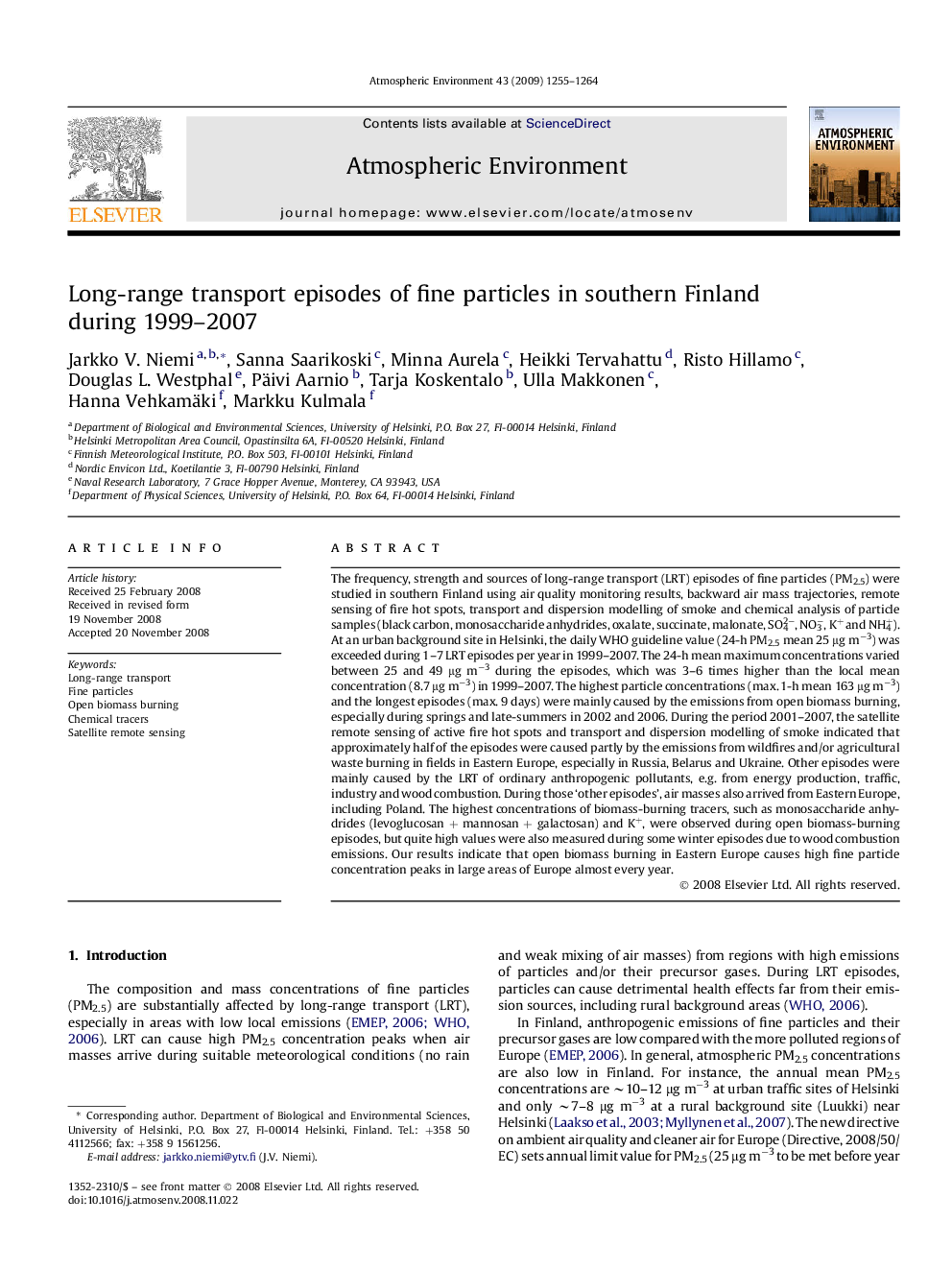| Article ID | Journal | Published Year | Pages | File Type |
|---|---|---|---|---|
| 4442007 | Atmospheric Environment | 2009 | 10 Pages |
The frequency, strength and sources of long-range transport (LRT) episodes of fine particles (PM2.5) were studied in southern Finland using air quality monitoring results, backward air mass trajectories, remote sensing of fire hot spots, transport and dispersion modelling of smoke and chemical analysis of particle samples (black carbon, monosaccharide anhydrides, oxalate, succinate, malonate, SO42−, NO3−, K+ and NH4+). At an urban background site in Helsinki, the daily WHO guideline value (24-h PM2.5 mean 25 μg m−3) was exceeded during 1–7 LRT episodes per year in 1999–2007. The 24-h mean maximum concentrations varied between 25 and 49 μg m−3 during the episodes, which was 3–6 times higher than the local mean concentration (8.7 μg m−3) in 1999–2007. The highest particle concentrations (max. 1-h mean 163 μg m−3) and the longest episodes (max. 9 days) were mainly caused by the emissions from open biomass burning, especially during springs and late-summers in 2002 and 2006. During the period 2001–2007, the satellite remote sensing of active fire hot spots and transport and dispersion modelling of smoke indicated that approximately half of the episodes were caused partly by the emissions from wildfires and/or agricultural waste burning in fields in Eastern Europe, especially in Russia, Belarus and Ukraine. Other episodes were mainly caused by the LRT of ordinary anthropogenic pollutants, e.g. from energy production, traffic, industry and wood combustion. During those ‘other episodes’, air masses also arrived from Eastern Europe, including Poland. The highest concentrations of biomass-burning tracers, such as monosaccharide anhydrides (levoglucosan + mannosan + galactosan) and K+, were observed during open biomass-burning episodes, but quite high values were also measured during some winter episodes due to wood combustion emissions. Our results indicate that open biomass burning in Eastern Europe causes high fine particle concentration peaks in large areas of Europe almost every year.
